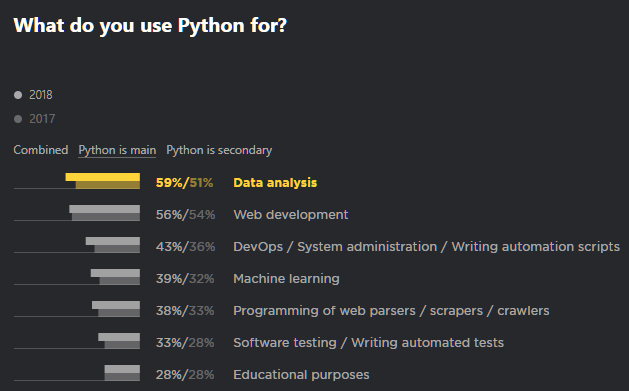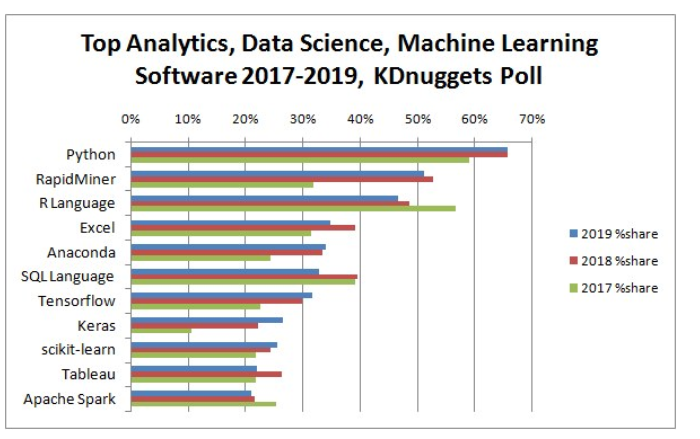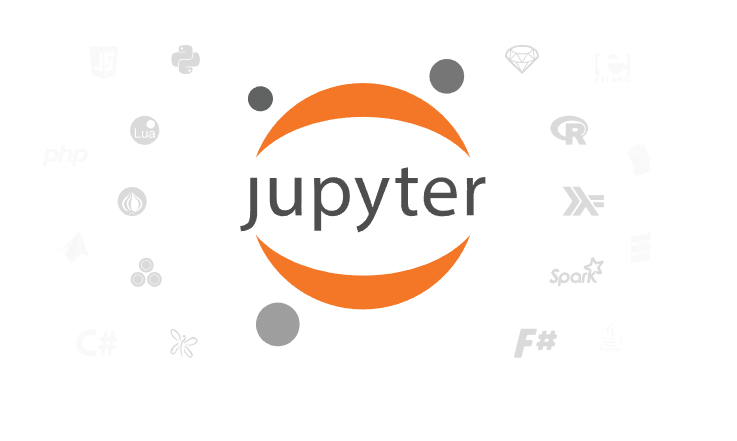Python is a popular programming language. And why not? It is a general-purpose programming language with all the bells and whistles.
In this article, we will cover Python for data science. Python supports object-oriented, functional programming, and structured programming, which makes it an ideal programming language for data science.
Dev_Zero, a Python programmer with eight years of experience, is also keen when it comes to data visualization and analytics using Python.
Python is equally useful in creating other types of services and products. For example, AndreyBu, a senior web developer from Germany, develops a YouTube Clone using Python and Django. It is an interesting project, and you should check it out!
Is Python the most popular programming language for data science?
The popularity of Python is wide-known among the data science community.
With data at the core of any system, it is the tools that help the data scientist to uncover the hidden mysteries. Python has emerged as one of the best data science tools.
Python is not alone. There are other tools such as R programming language which is a viable programming language for data science. But, Python’s utility is undoubtedly unmatched.
According to the Python Developers Survey 2018, Python is used by 59% of the developers for data analysis.

Source: JetBrains
Python’s utility can also be gauged from tensorflow – a deep learning framework managed by Google. It is entirely written in Python. Tensorflow is used by many big corporations, including Netflix.
Python has also beaten R as the top Data Science tool from 2016. Right now, Python is the number one data science tool, according to the 2019 KDnuggets Pool.

Source: KDNuggets
What makes Python so popular for data science?
So, what makes Python so appealing to the data scientist or a learner like you? It is Python’s speed, ease-of-use, ecosystem, and the community, which makes it an excellent tool for data science purposes.
Let’s list the reasons below to understand why Python for Data Science is the right choice.
1. Easy to learn
Python is easy to learn. This makes Python ideal for almost every programming task. For data scientists, it is vital to implement their algorithms rather than focus on the tool itself.
The syntax of Python is what makes it appealing. It is easy-to-write and read. The learning curve, in return, is low, and anyone working on their data science project can quickly focus on the algorithm logic, rather than spending hours on the learning the tool itself.
We advise using Jupyter that let you create and share live documents of equations, code, narrative text, and visualization. It works with Python and will ensure that you work productively on your projects.

Source: Jypyter
2. Data Science Libraries
There are thousands of data science libraries for Python. It helps not only the established data science practitioners but also the learners.
To name a few, the popular data science libraries include NumPy, Pandas, SciPy, and Matplotlib.
- Numpy – Numpy offers high-level mathematical functions for data science projects. It is equally useful for scientific projects using Python. With it, you can easily work with matrices and arrays.
- Pandas – Pandas is built on top of Numpy. It is used to do operations and data structures on time series and numerical tables.
- SciPy is also evolved from NumPy. It focuses on numerical integrations.
- Matplotlib lets you create 2D plots and help visualize data through histograms, scatterplots, and bar charts.
All these libraries are at the core of learning and data science projects.
3. Scalable
Python is scalable. This means that you can implement highly-scalable solutions using Python. It is crucial for projects that rely heavily on scalability and real-time data.
4. Python Community
Python for data science is made possible with the help of the community. Its ecosystem is what makes Python a must learn programming language for data science.
A great community means it is easy to find solutions. It is also easy to find mentors and coding partners.
Other aspects which make Python an excellent tool for data science includes
- Easy to debug.
- Great online source material.
- Open source.
How Python is used in Data Science
Now that we have learned that Python for data science is a great choice, it is now time to learn how we can use Python in Data Science.
It is easy to get overboard with the Python programming language. If you are new, you do not need to master Python straight away. All you need to do is, learn Python enough to use it to solve data science problems.
Initially, you need to get access to data. To scrap the data, you need to use a web crawler or download it from a trusted source. Once done, you now need to ensure that the data is placed nicely in the excel sheet. This will help you to do simple operations on the data using popular Python libraries such as Pandas and Numpy.
To improve your analysis, you also need to visualize the data. To do so, simply use visualization libraries such as Seaborn or Matplotlib. These libraries will help you make sense of data, and represent it in the form of pie-charts, histogram, and other figures.
With all the data collected and visualized, you now need to use machine learning to compute the data. Machine learning enables fast computation of the data according to the algorithms used — giving you an efficient way to handle with million rows of data. You can use the scikit-learn library to achieve the end results.
Lastly, you may want to do image processing for better understand. In that case, you can use the open-source OpenCV to visualize the data in image format.
How to Learn Python for Data Science
To get you a better understanding of Python’s role in data science, we will not help you with the steps required to learn Python for data science.
1. Learn Python Fundamentals
The first step is to learn Python fundamentals.
There are plenty of ways you can learn Python. We recommend searching for a Python basics course. You may also want to join a learning community where you will find similar-minded learners.
For beginners, we also recommend using the Jupyter Notebook as it will help you keep track of your learning. It also helps to share ideas, notes, codes, equation with your fellow learners.
2. Do small Python projects
Once you are done with the Python fundamentals, it is time to do small Python projects. These small projects should keep you busy for a while.
For starters, you can check out Python web development projects or maybe create a web crawler using Python.
Your gateway for better understanding of Python is Python guide. Following the guide will help you quickly grasp Python.
You can also read blog posts and other people’s code to dive deep into the programming language. In books, we suggest you to read, “Automate The Boring Stuff With Python” by AI Sweigart.
3. Learn Data Science Libraries
The next step is to learn data science libraries. We already discussed the important data science libraries, including Numpy, Pandas, SciPy, and Matplotlib.
These libraries will expose you to different data science methodologies and help you work through the collected data.
During your quest to learn these libraries, do take help from Stack Overflow and Education Ecosystem. You can also find comprehensive guides on the tools on medium and other online portals.
It is always handy to keep the Python Data Science Handbook by Jake VanderPlas. It covers all the essential data science tool.
4. Build and Explore
Exploring your way through data science by building a portfolio. In the competitive market, you need to take extra steps to stand apart. This is where the portfolio comes in.
To make your portfolio interesting, you should use different datasets. These datasets, when explored correctly, can give you exciting and unique insights — which can add value to your portfolio.
Furthermore, the build phase should also include collaboration efforts. If you want to grow as a professional data scientist or someone who knows his trade well, you should learn the art of collaborating. In this phase, focusing on your communication can also help you evolve your skill set.
Lastly, try to use GIT version control for your projects. This will give you the ability to work through different projects quickly.
5. Teach Data Science
What’s better than learning? It’s teaching!
Teaching can open up new ways of exploring data science. Doing projects from scratch that can help learners, not only boost your confidence but also add value to your portfolio.
Creators program at the Education Ecosystem aims to do just that.
By creating your very first data science project, you can reach thousands of data science learners and also earn at the same time.
Meanwhile, you can also take advantage of YouTube by uploading data science tutorial videos.
6. Learn advanced data science techniques
The last step is to keep learning! Data Science, like other latest field, is growing rapidly. For you to stay relevant, you need to keep learning.
You can make your skills reliable by exploring machine learning, data visualization, or any other part that excites you. Also, if you do not have the statistics skill, it is the right time to get started.
Technically, you should focus on creating classification, regression, or k-means clustering models. If you are ambitious, you should also work on creating your own models using live data feeds.
Conclusion
There is a significant demand in the data science field. With enterprises, startups, and companies relying heavily on data, there will always be a demand.
So, what do you think about Python for data science? Also, what is the purpose of your learning Python?
Comment below and let us know.







